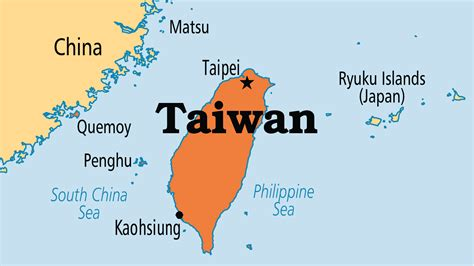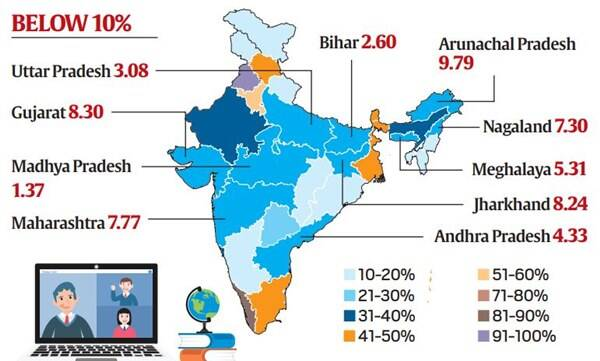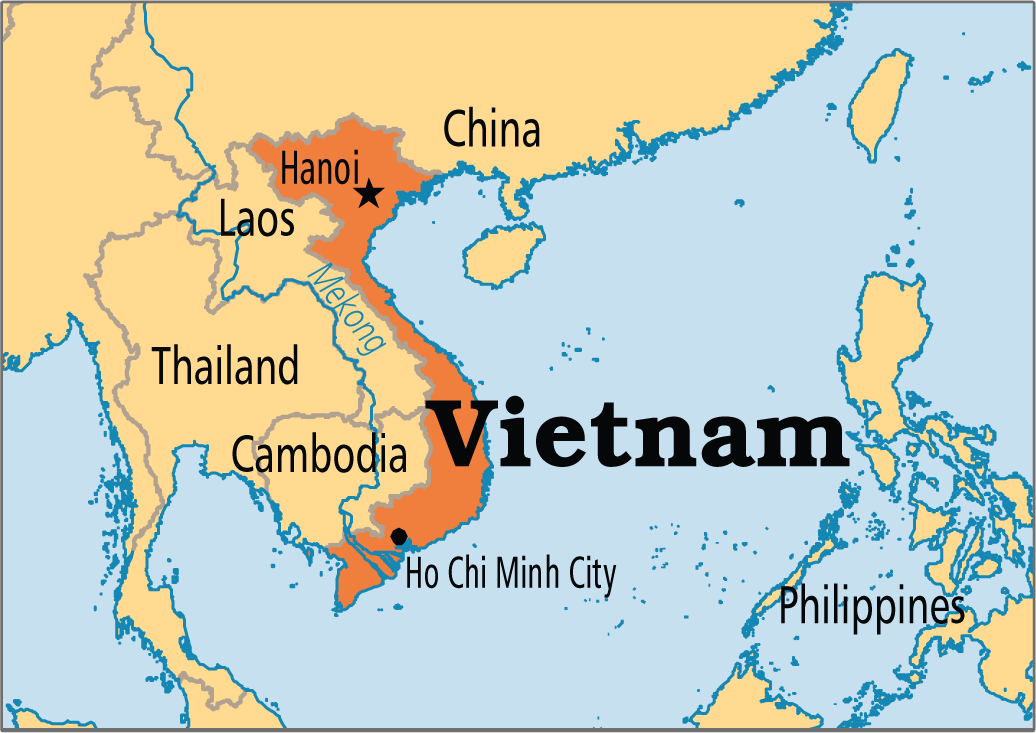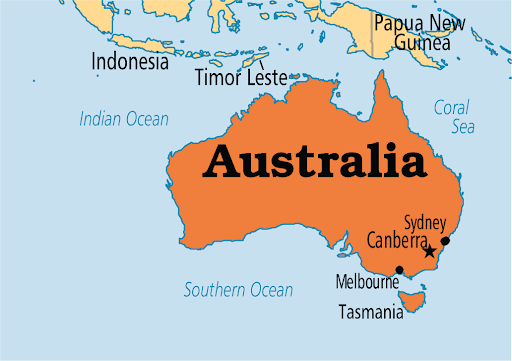International Relations
India & its Neighbourhood
For Prelims: India & Its Border with Neighbour Countries, Foreign Policy, Gujral Doctrine
For Mains: India’s relations with its neighbours, India’s initiatives & agreements with neighbours, Challenges in Neighbourhood First Policy
Why in News?
Recently, Indian External Affairs Minister met with Maldives President stating that India's 'Neighborhood First' policy and the Maldives' 'India First' policy complement each other, advancing the special partnership.
What is India’s Neighbourhood First Policy?
- About:
- Under its 'Neighbourhood First' policy, India is committed to developing friendly and mutually beneficial relations with all its neighbours.
- India is an active development partner and is involved in several projects in these countries.
- India’s policy of ‘Neighbourhood First’ focuses on creating mutually beneficial, people-oriented, regional frameworks for stability and prosperity.
- India’s engagement with these countries is based on a consultative, non-reciprocal and outcome-oriented approach, which focuses on delivering benefits like greater connectivity, improved infrastructure, stronger development cooperation in various sectors, security and broader people-to-people contacts.
- Under its 'Neighbourhood First' policy, India is committed to developing friendly and mutually beneficial relations with all its neighbours.
- Purpose:
- Connectivity:
- India has entered into MoU (Memorandum of Understanding) with members of the South Asian Association for Regional Cooperation (SAARC).
- These agreements ensure a free flow of resources, energy, goods, labour, and information across borders.
- India has entered into MoU (Memorandum of Understanding) with members of the South Asian Association for Regional Cooperation (SAARC).
- Improving Relations with Neighbours:
- Priority is to improve the relations with immediate neighbours as peace and tranquillity in South Asia is essential for realising development agenda.
- Dialogue:
- It focuses on vigorous regional diplomacy by engaging with neighbouring nations and building political connectivity through dialogue.
- Economic Cooperation:
- It focuses on enhancing trade ties with neighbours.
- India has participated and invested in SAARC as a vehicle for development in the region.
- One such example is the Bangladesh-Bhutan-India-Nepal (BBIN) grouping for energy development i.e. motor vehicles, waterpower management and inter-grid connectivity.
- It focuses on enhancing trade ties with neighbours.
- Disaster Management:
- The policy also focuses on cooperating on disaster response, resource management, weather forecasting and communication and also capabilities and expertise in disaster management for all South Asian citizens.
- Military and Defence Cooperation:
- India is also focusing on deepening security in the region through military cooperation by conducting as well as participating in various defence exercises.
- Connectivity:
How has India’s Relations with its Neighbours been?
- India - Maldives:
- Security Partnership:
- Recently, the National College for Policing and Law Enforcement (NCPLE) was inaugurated by India’s External Affairs Minister during his two day visit to Maldives in 2022.
- Rehabilitation Centre:
- Signing of an USD80-million contract for the Addu reclamation and shore protection project.
- A drug detoxification and rehabilitation centre in Addu built with Indian assistance.
- The centre is one of 20 high impact community development projects being implemented by India in areas such as healthcare, education, fisheries, tourism, sports and culture.
- Economic Cooperation:
- Tourism is the mainstay of Maldivian economy. The country is now a major tourist destination for some Indians and a job destination for others.
- In August 2021, Afcons, an Indian company, signed a contract for the largest-ever infrastructure project in Maldives which is the Greater Male Connectivity Project (GMCP).
- Security Partnership:
- India - Bhutan:
- Indo-Bhutan Treaty of Peace and Friendship, 1949:
- The Treaty provides for, among other things, perpetual peace and friendship, free trade and commerce and equal justice to each other’s citizens.
- In 2007 the treaty was re-negotiated, and provisions were included to encourage Bhutan’s sovereignty, abolishing the need to take India’s guidance on foreign policy.
- The Treaty provides for, among other things, perpetual peace and friendship, free trade and commerce and equal justice to each other’s citizens.
- Hydropower Cooperation:
- This hydropower cooperation comes under the 2006 Agreement on Cooperation in Hydropower.
- Under a protocol to this agreement, India has agreed to assist Bhutan in the development of a minimum of 10,000 MW of hydropower and import of surplus electricity from the same by 2020.
- This hydropower cooperation comes under the 2006 Agreement on Cooperation in Hydropower.
- Economic Assistance:
- India is Bhutan’s leading development partner.
- Since the launch of the First Five Year Plan of Bhutan in 1961, India has been extending financial support to Bhutan’s FYPs.
- India has allotted Rs 4500 crore to Bhutan’s 12th FYP (2018-23).
- Indo-Bhutan Treaty of Peace and Friendship, 1949:
- India - Nepal:
- High Level Visit:
- Recently, the Indian Prime Minister has visited Lumbini, Nepal, the birthplace of Buddha, where he laid a foundation stone along with Nepalese Prime Minister for a Buddhist Vihara, being built with Indian assistance.
- Treaty of Peace and Friendship of 1950:
- The treaty talks about reciprocal treatment of Indian and Nepali citizens in the two countries, in residence, property, business and movement.
- It also establishes national treatment for both Indian and Nepalese businesses (i.e. once imported, foreign goods would be treated no differently than domestic goods).
- The treaty talks about reciprocal treatment of Indian and Nepali citizens in the two countries, in residence, property, business and movement.
- Hydropower Projects:
- The two countries signed five agreements, including one between the Satluj Jal Vidyut Nigam (SJVN) Ltd and the Nepal Electricity Authority (NEA) for development and implementation of 490.2 megawatts Arun-4 hydropower project.
- Nepal also invited Indian companies to invest in the West Seti hydropower project in Nepal.
- The two countries signed five agreements, including one between the Satluj Jal Vidyut Nigam (SJVN) Ltd and the Nepal Electricity Authority (NEA) for development and implementation of 490.2 megawatts Arun-4 hydropower project.
- High Level Visit:
- India - Sri Lanka:
- Hybrid Power:
- India & Sri Lanka signed a MoU that provided India to set up hybrid power projects in three Islands (Nainativu , Delft or Neduntheevu , and Analaitivu) off Jaffna.
- Maritime Rescue Coordination Center:
- India and Sri Lanka have also agreed to set up a Maritime Rescue Coordination Center (MRCC), signaling greater defence sector collaboration between the neighbours.
- Unitary Digital Identity framework:
- India has agreed to provide a grant to Sri Lanka to implement a ‘Unitary Digital Identity framework’, apparently modelled on the Aadhaar card.
- It is similar to India’s own Aadhaar and under the proposed Unitary Digital Identity framework, Sri Lanka is expected to introduce a:
- Personal identity verification device based on biometric data.
- Digital tool that can represent the identities of individuals in cyberspace.
- Identification of individual identities that can be accurately verified in digital and physical environments by combining the two devices.
- It is similar to India’s own Aadhaar and under the proposed Unitary Digital Identity framework, Sri Lanka is expected to introduce a:
- India has agreed to provide a grant to Sri Lanka to implement a ‘Unitary Digital Identity framework’, apparently modelled on the Aadhaar card.
- Hybrid Power:
What are the Challenges in India’s Neighbourhood First Policy?
- Growing Chinese Pressure:
- It failed to take a meaningful direction and growing Chinese pressure has prevented the country from winning allies in the region.
- On the maritime front, China is extending its influence across the Indo-Pacific region.
- It failed to take a meaningful direction and growing Chinese pressure has prevented the country from winning allies in the region.
- Interference in Domestic Affairs:
- India is interfering in the domestic affairs of neighbouring countries especially in Nepal in the violation of their sovereignty.
- India is also creating hurdles in free transit and free trade within and beyond Nepal and keeps suppressing its people and government.
- India is interfering in the domestic affairs of neighbouring countries especially in Nepal in the violation of their sovereignty.
- Impact of India’s Domestic Politics:
- India’s domestic policies are creating problems in Bangladesh, a Muslim-majority country, showing India’s neighbourhood first policy faces serious challenges even in friendly territories like Bangladesh.
- Impact of India’s Tilt towards West:
- India draws closer to the West, particularly through the Quad and other multilateral and mini-lateral initiatives.
- But Sri Lanka’s connections with the West are not moving in a good direction as the country’s current government faces increasing criticism from Western capitals on human rights issues and freedoms.
- India draws closer to the West, particularly through the Quad and other multilateral and mini-lateral initiatives.
Way Forward
- India’ neighbourhood policy should be based on the principles of Gujral Doctrine.
- This would ensure India’s stature and strength cannot be isolated from the quality of its relations with its neighbours and there can be regional growth as well.
- Integrating India’s regional economic and foreign policy remains a major challenge.
- Therefore, India should resist compromising bilateral relationships with neighbours for short economic interests.
- Regional connectivity must be pursued with greater vigour while security concerns are addressed through cost-effective, efficient and reliable technological measures which are in use in other parts of the world.
UPSC Civil Services Examination, Previous Year Questions (PYQs)
Q. “China is using its economic relations and positive trade surplus as tools to develop potential military power status in Asia”. In the light of this statement, discuss its impact on India as her neighbour. (2017)

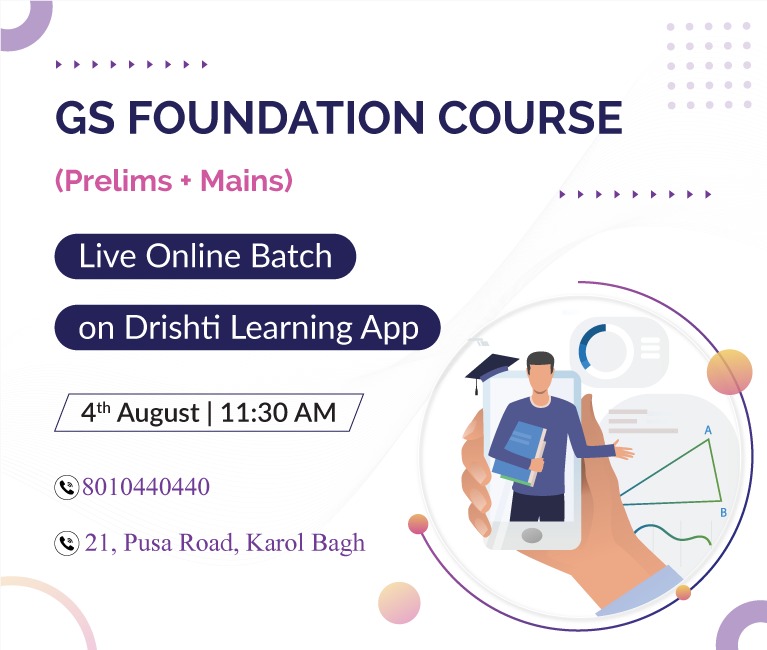
Indian Economy
Regional Rural Banks
For Prelims: Core Banking Solution (CBS), Regional Rural Banks, capital to risk-weighted assets ratio (CRAR), capital to risk-weighted assets ratio (CRAR), Micro, Small, and Medium Enterprises (MSME).
For Mains: Regional Rural Banks' role in the rural economy
Why in News?
Recently, a meeting was held between the finance minister and the heads of banks to discuss various reforms in Regional Rural Banks (RRBs).
What are RRBs?
- About:
- The Regional Rural Banks (RRBs) were established in 1975 under the provisions of the Ordinance promulgated on 26th September 1975 and Regional Rural Banks Act, 1976.
- RRBs are financial institutions which ensure adequate credit for agriculture and other rural sectors.
- The RRBs combine the characteristics of a cooperative in terms of the familiarity of the rural problems and a commercial bank in terms of its professionalism and ability to mobilise financial resources.
- After the reforms in the 1990s, the government in 2005-06 initiated a consolidation program that resulted in the number of RRBs declining from 196 in 2005 to 43 in FY21, and 30 of the 43 RRBs reported net profits.
- Functions:
- The basic functions of a bank can be summarized as follows:
- To provide safety to the savings of customers
- To create credit and increase the supply of money
- To encourage public confidence in the financial system
- To mobilize the savings of public
- To increase its network so as to reach every segment of the society
- To provide financial services to all customers irrespective of their level of income
- To bring in social equity by providing financial services to every stratum of society.
- The basic functions of a bank can be summarized as follows:
What are the Issues Related to RRBs?
- Rising Cost: The rising cost of operations of Regional Rural Banks (RRBs) as compared to scheduled commercial banks.
- The government wants them to work towards increasing their earnings.
- Limited Activities: Due to the fact that many of these branches don't have enough business, they are incurring losses.
- In rural areas, they mainly offer government schemes like Direct Benefit ransfer.
- Low Internet Banking: At present only 19 RRBs have internet banking facilities and 37 have mobile banking licenses.
- Existing regulations allow only those RRBs to offer internet banking which maintains minimum statutory capital to risk-weighted assets ratio (CRAR) of more than 10%.
What are the Suggestions by the Government?
- It has asked RRBs to move towards digitization, including offering internet banking services to its customers and expanding their credit base further through increased lending to the Micro, Small, and Medium Enterprises (MSME) sector.
- So that they become financially sustainable
- It urged the sponsor banks to formulate a clear roadmap in a time-bound manner to further strengthen the RRBs and support the post-pandemic economic recovery and
- Also, suggested conducting a workshop on RRBs and sharing the best practices with each other.
How are RRBs being Reformed by the Government?
- Over the years, various steps have been taken by the government to increase the contribution of people to the financial system of India.
- In 1969, a major renovation in the banking sector took place with the Nationalization of all the Banks existing in India. In the year 1981, the National Bank for Agriculture and Rural Development (NABARD) was established.
- The main aim of establishing NABARD was to promote sustainable and impartial agriculture and enhance rural prosperity through effective credit support, related services, institution development, and other innovative initiatives.
- In 1969, a major renovation in the banking sector took place with the Nationalization of all the Banks existing in India. In the year 1981, the National Bank for Agriculture and Rural Development (NABARD) was established.
- Hence, the National Bank for Agriculture and Rural Development (Nabard) will spearhead the initiative to revive the RRBs.
- Further, the development bank is already working on a roadmap for 22 RRBs which is expected to be implemented by the end of this year.
- The plan also included merging branches of these RRBs with sponsor banks once these branches reach a certain level of business.
- Last year, the government set up a panel with members drawn from Nabard and the RBI to give recommendations for strengthening the regional lenders.
- The government has contributed RS 4,084 crores towards RRB recapitalization in 2021-22, of which Rs. 3,197 crores has been released to 21 lenders. focus on financial inclusion by leveraging technology
- Further, the development bank is already working on a roadmap for 22 RRBs which is expected to be implemented by the end of this year.
Way Forward
- There is a need to have a common framework for RRBs, along the lines of core banking solution (CBS), so that all of them can provide online banking services to their customers and further, enhance their outreach and profitability.
- There should be more like internet banking etc.
- Further, they need to increase their efficiency and touch various other dimensions of banking, like providing loans to merchants, MSME’s that could increase their profitability.
UPSC Civil Services Examination Previous Year Question (PYQ)
Prelims
Q. Which of the following grants/grant direct credit assistance to rural households? (2013)
- Regional Rural Banks
- National Bank for Agriculture and Rural Development
- Land Development Banks
Select the correct answer using the codes given below:
(a) 1 and 2 only
(b) 2 only
(c) 1 and 3 only
(d) 1, 2 and 3
Ans: (c)
Exp:
- Regional Rural Banks -
- These were set up as government-sponsored, regional based rural lending institutions under the Regional Rural Banks Act, 1976.
- Mission of RRBs is to fulfil the credit needs of the relatively unserved sections in the rural areas, small and marginal farmers, agricultural labourers and socio-economically weaker sections.
- Shareholding pattern of RRBs among the three sponsoring entities is 50: 35: 15 among the central government, sponsoring bank and state government, respectively. Hence, 1 is correct.
- National Bank for Agriculture and Rural Development (NABARD)
- It is a statutory body established in 1982 under parliamentary Act-National Bank for Agriculture and Rural Development Act, 1981.
- It is responsible for the development of the small industries, cottage industries, and any other such village or rural projects.
- It provides refinance support for building rural infrastructure and not directly finance rural households. Hence, 2 is not correct.
- It prepares district level credit plans to guide and motivate the banking industry in achieving targets.
- Land Development Banks -
- Quasi-commercial banks registered under the Cooperative Societies Act, these are associations of borrowers as well as non-borrowers organized on the principle of limited liability.
- All landowners are eligible to become members and borrow funds by mortgaging teir land.
- The principal borrower is enrolled as ‘A’ class member and others who have an interest in the mortgaged property are admitted as ‘B’ class members. Thus, they also grant direct credit assistance to rural households. Hence, 3 is correct. Therefore, option (c) is the correct answer


Biodiversity & Environment
Feasibility of Carbon Removal by Restoring Coastal Vegetation
For Prelims: Carbon Sequestration, Climate Change, Coastal Ecosystem, Carbon Dating, Blue Carbon
For Mains: Feasibility of Carbon Removal by Restoring Coastal vegetation
Why in News?
Recently, a study has been published, which has raised scepticism about the efficiency of restoring coastal habitats to offset carbon emissions.
What are the Findings?
- Restoring Coastal habitats is far from certain and unreliable. and there’s a real risk that the scale at which they can mitigate emissions has been massively oversold.
- It is extremely difficult to work out a reliable figure for carbon accumulation by coastal ecosystems under current conditions.
- There is a very weak basis for calculating the future carbon offsets that restoration projects might provide over the next 50 to 100 years.
What are the Causes of Uncertainty?
- Wide Variation in Estimates:
- Estimates of the rate at which blue carbon habitats remove CO₂ from the atmosphere vary widely.
- Blue Carbon refers to carbon sinks held by coastal, aquatic, and marine vegetation, marine organisms, and sediments.
- Across several hundred scientific studies, there was a 600-fold difference between the highest and lowest estimates for carbon burial in salt marshes, a 76-fold difference for seagrasses and a 19-fold difference for mangroves.
- Estimates of the rate at which blue carbon habitats remove CO₂ from the atmosphere vary widely.
- Errors in Dating Process:
- Burrowing organisms disturb and mix younger and older layers, causing errors in the dating process of fossis fuels by making sediments seem younger, and carbon burial rates greater, than they really are.
- Carbon dating is a radiometric dating method. It uses the naturally occurring radioisotope carbon-14 (14C) to estimate the age of carbon-bearing materials up to about 58,000 to 62,000 years old.
- Burrowing organisms disturb and mix younger and older layers, causing errors in the dating process of fossis fuels by making sediments seem younger, and carbon burial rates greater, than they really are.
- Imported Carbon More Resistant to Decay:
- Much of the carbon buried in coastal sediments comes from elsewhere, such as soil swept from the land and carried by rivers. This is called Imported Carbon.
- In a study on one saltmarsh, the proportion of 50% imported carbon near the sediment surface increased to 80% in deeper layers.
- Since the deeper value represents the habitat’s long-term carbon burial rate, the direct contribution of a restored habitat to removing carbon may be much less important than thought.
- Release of Marsh Gas:
- Turning an oil palm plantation back into a mangrove forest or flooding a coastal area to make a saltmarsh should help the land accumulate carbon.
- But that same land could also release more methane (otherwise known as marsh gas) and nitrous oxide – both powerful greenhouse gases – leaving no net climate benefit.
- Calcifying Animals Contribute Emissions:
- There are calcifying animals and plants which grow in these habitats, particularly seagrass meadows.
- The strap-like leaves of seagrass are often covered by a white crust of shelled worms and coralline algae.
- When these organisms make their calcium carbonate covering, CO₂ is produced.
What are the Recommendations?
- Blue carbon habitats should still be protected and, where possible, restored, as they have benefits for climate adaptation, coastal protection, food provision and biodiversity conservation.
- Every effort should still be made to halt, and wherever possible reverse, the worldwide loss of coastal vegetation. Blue carbon habitats are, after all, more than carbon sinks – they also protect communities from storms, nurture biodiversity and species targeted for fisheries, and improve water quality.
- The priority must be to double down on emission reductions, only using carbon removal methods to help achieve net zero where their success is certain.
UPSC Civil Services Examination Previous Year Question (PYQ)
Prelims
Q. What is blue carbon?
(a) Carbon captured by oceans and coastal ecosystems
(b) Carton sequestered in forest biomass and agricultural soils
(c) Carbon contained in petroleum and natural gas
(d) Carbon present in atmosphere
Ans: (a)

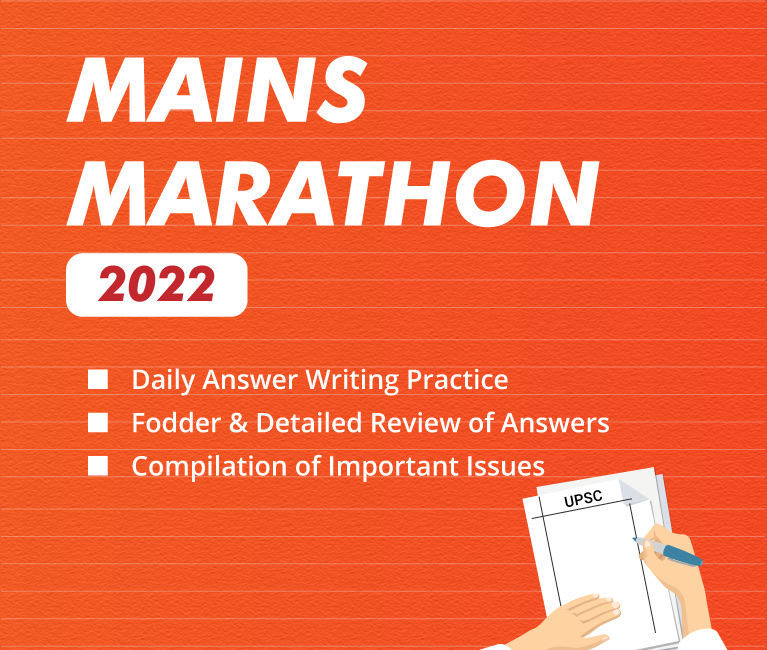
International Relations
US-China Tensions
For Prelims: Location of Taiwan and China
For Mains: US- China Rivalry over Taiwan Issue and Need to Enhance India-Taiwan Relations
Why in News?
Recently, the Speaker of the House of Representatives of US visited Taiwan, the highest level American official to go to the island since 1997.
- This visit has raised tension between US and China.
What is the Taiwan-China issue?
- About:
- Taiwan is an island about 160 km off the coast of southeastern China, opposite the Chinese cities of Fuzhou, Quanzhou, and Xiamen.
- History:
- It was administered by the Qing imperial dynasty, but its control was passed to the Japanese in 1895.
- After the defeat of Japan in World War II, the island passed back into Chinese hands.
- After the communists led by Mao Zedong won the civil war in mainland China, Chiang Kai-shek, the leader of the nationalist Kuomintang party, fled to Taiwan in 1949.
- Chiang Kai-shek set up the government of the Republic of China on the island and remained President until 1975.
- Following the split of China and Taiwan in the civil war, the Republic of China (ROC) government was relocated to Taiwan. On the other hand, The Communist Party of China (CPC) established the People’s Republic of China (PRC) in the mainland.
- Since then, the PRC observes Taiwan as a traitor province and awaits reintegration with Taiwan, if possible, by peaceful means.
- It was administered by the Qing imperial dynasty, but its control was passed to the Japanese in 1895.
- Present status:
- China has never recognized the existence of Taiwan as an independent political entity, arguing that it was always a Chinese province.
- But China and Taiwan have had economic ties.
- Many migrants from Taiwan work in China, and China has investments in Taiwan.
- China has never recognized the existence of Taiwan as an independent political entity, arguing that it was always a Chinese province.
What is USA’s Policy toward Taiwan?
- About:
- It has maintained a ‘One China’ policy since the 1970s, under which it recognizes Taiwan as a part of China.
- ‘One China’ policy means that the nations who want to have diplomatic relations with the People’s Republic of China (PRC) have to recognize the PRC but not the ROC as China, breaking the relations with Republic of China (ROC).
- It established that the communist government in mainland China was the legitimate representative and Taiwan was a breakaway part of it.
- But it also has unofficial ties with Taiwan.
- And do support Taiwan in the form of defending the island from external aggression by providing military equipment and intelligence.
- It has maintained a ‘One China’ policy since the 1970s, under which it recognizes Taiwan as a part of China.
- China’s Concern with the Recent Visit:
- As China considers Taiwan as a part of its territory, it claimed that the visit would severely undermine China’s sovereignty and territorial integrity.
- It could gravely impact the foundation of China-US relations and send a seriously wrong signal to Taiwan's independence forces.
- According to China, the presence of a senior American figure in Taiwan would indicate some kind of US support for Taiwan’s independence.
- As China considers Taiwan as a part of its territory, it claimed that the visit would severely undermine China’s sovereignty and territorial integrity.
What is Indian Policy towards Taiwan?
- India also follows One China Policy and it doesn’t have formal diplomatic ties with Taiwan. But it has an office in Taipei for diplomatic functions.
- India-Taipei Association (ITA) is headed by a senior diplomat.
- whereas, Taiwan has the Taipei Economic and Cultural Center (TECC) in New Delhi.
- The Indo-Taiwanese ties basically focused on trade, commerce, culture, and education.
- In recent times, after China’s belligerence in Galwan, India has stepped up its relationship with Taiwan.
- The Indian government had handpicked diplomat to become its envoy in Taipei.
- Also, the ruling party’s two MPs attended the swearing-in ceremony of Taiwan President through virtual mode.
What is the Importance of Taiwan?
- Semiconductors are critical components that power electronics from computers and smartphones to brake sensors in cars.
- The production of chips involves a complex network of firms that design or make them, as well as those that supply the technology.
- The majority of semiconductors are produced in Taiwan and it dominates the outsourcing of semiconductor manufacturing.
- Further, its contract manufacturers together accounted for more than 60% of total global semiconductor revenue last year.
Way Forward
- It is time for India to rethink its One China Policy and separate its relationship with mainland China from that with Taiwan.
- Also, further enhance its security and economic ties with Taiwan in the same way as China is expanding its involvement in Pakistan occupied Kashmir (PoK) through its ambitious project China Pakistan Economic Corridor (CPEC).


Indian Economy
Financial Inclusion Index: RBI
For Prelims: Financial Inclusion, Initiatives to Promote Financial Inclusion, RBI
For Mains: Significance of Financial Inclusion Index
Why in News?
The Reserve Bank of India has released the Composite Financial Inclusion Index (FI-Index) for the year ended 31st March 2022.
What are the Findings?
- India’s Financial Inclusion Index has improved to 56.4 from 53.9 in the previous year 2021.
- The improvement has been seen across all its sub-indices (Access, Usage and Equality).
What is the Financial Inclusion Index?
- About:
- It is a comprehensive index incorporating details of banking, investments, insurance, postal as well as the pension sector in consultation with the government and respective sectoral regulators.
- It was developed by the RBI in 2021, without any ‘base year', and is published in July every year.
- Aim:
- To capture the extent of Financial Inclusion across the country.
- The FI-Index is responsive to ease of access, availability and usage of services and quality of services, consisting of 97 indicators.
- Parameters:
- It captures information on various aspects of financial inclusion in a single value ranging between 0 and 100, where 0 represents complete financial exclusion and 100 indicates full financial inclusion.
- It comprises three broad parameters (weights indicated in brackets) viz., Access (35%), Usage (45%), and Quality (20%) with each of these consisting of various dimensions, which are computed based on a number of indicators.
- The index is responsive to ease of access, availability and usage of services, and quality of services for all 97 indicators.
What is the Significance of FI Index?
- Measures Level of Inclusion:
- It provides information on the level of financial inclusion and measures financial services for use in internal policy making.
- Development Indicators:
- It can be used directly as a composite measure in development indicators.
- Fulfil the G20 Indicators:
- It enables fulfilment of G20 Financial Inclusion Indicators requirements.
- The G20 indicators assess the state of financial inclusion and digital financial services, nationally and globally.
- Facilitate Researchers:
- It also facilitates researchers to study the impact of financial inclusion and other macroeconomic variables.
What is Financial Inclusion?
- Financial inclusion is defined as the process of ensuring access to financial services and timely and adequate credit where needed by vulnerable groups such as weaker sections and low-income groups at an affordable cost.
- In a diverse country like India, financial inclusion is a critical part of the development process. Since independence, the combined efforts of successive governments, regulatory institutions, and civil society have helped in increasing the financial-inclusion net in the country.
- Being able to have access to a transaction account is a first step toward broader financial inclusion since a transaction account allows people to store money, and send and receive payments. A transaction account serves as a gateway to other financial services.
What are the Initiatives to Increase Financial Inclusion in India?


Social Justice
Digital Gap in Education
For Prelims: Digital Gap, Information and Communication Technology, Right to Education, Article 21A
For Mains: Digital gap in Education, Its Impact and Way Forward
Why in News?
Recently, the Ministry of Education informed Lok Sabha that less than 10% of schools are equipped with Information and Communication Technology (ICT) tools or Digital Tools, in at least 10 states of India.
What are the ICT Tools?
- ICT tools for teaching and learning cover everything from digital infrastructures such as printers, computers, laptops, tablets, etc., to software tools such as Google Meet, Google Spreadsheets, etc.
- It refers to all communication technologies that are the tools to access, retrieve, store, transmit and modify information digitally.
- ICTs are also used to refer to the convergence of media technology such as audio-visual and telephone networks with computer networks, by means of a unified system of cabling (including signal distribution and management) or link system.
- However, there is no universally accepted definition of ICTs considering that the concepts, methods, and tools involved in ICTs are steadily evolving on an almost daily basis.
What is a Digital Gap?
- About:
- It is a gap between demographics and regions having access to modern information and communications technology (ICT) and those not having access.
- It exists between developed and developing countries, urban and rural populations, young and educated versus older and less-educated individuals, and men and women.
- In India the urban-rural divide is the single biggest factor in the Digital Gap.
- Status:
- A study in 2021 by the Azim Premji Foundation showed that almost 60 % of school children in India cannot access online learning opportunities.
- A study by Oxfam India found that even among students of urban private schools, half of the parents reported issues with Internet signal and speed. A third struggled with the cost of mobile data.
- Impact:
- Causes Dropouts and Child Labour:
- Children belonging to the Disadvantaged Groups may suffer the consequence of not having to fully pursue their education or worse still drop out because of the lack of access to ICT.
- They even run the danger of being drawn into child labour or worse, child trafficking.
- Deprivation of Quality Education:
- It will deprive people of higher/quality education and skill training that could help them contribute to the economy and become leaders on a global level.
- Unfair Competitive Edge:
- The poor will remain void of crucial information presented online concerning academia, and thus they will always lag, and this may be summed up by poor performance.
- Hence superior students who can access the internet have an unfair competitive edge over their less privileged counterparts.
- Learning Disparity:
- The people in lower socio-economic classes are disadvantaged and have to undergo long hours of cumbersome studies in meeting the objectives of the course.
- While the rich can easily access schooling materials online and work on their programs in a flash.
- Causes Dropouts and Child Labour:
What are the Constitutional Provisions for Right to Education?
- Originally Part IV of Indian Constitution, Article 45 and Article 39 (f) of DPSP (Directive Principles of State Policy), had a provision for state funded as well as equitable and accessible education.
- The 86th Constitutional Amendment in 2002, provided Right to Education as a fundamental right in Part-III of the Constitution.
- It inserted Article 21A which made Right to Education a fundamental right for children between 6-14 years.
- It provided for a follow-up legislation Right to Education Act 2009.
What are the Related Initiatives?
Way Forward
- Governments can become powerful instruments in bridging the digital divide by ensuring affordable, easy-to-use technologies. The high cost of internet connectivity, the price of technological devices, electricity tariffs, and taxes are major contributors to the digital Gap for both teachers and students.
- Teachers and students need to be fully trained on how to effectively use what the internet and modern technologies have to offer. The less students can use these tools, the more the digital divide widens.
- Educational online content creators should aim to make information available in as many languages as possible. When the users are confident that they can see content in their native or local languages, they are more inclined to use similar tools that provide personalised benefits.
- There is a special need to reduce the gender digital divide. Barriers and constraints in accessing the internet impede women's and girls' full involvement in the social and economic progress of their communities and countries.


Important Facts For Prelims
ONGC Para Games 2022
Why in News?
Recently, the Government of India inaugurated the 4th Oil and Natural Gas Corporation (ONGC) Para Games in New Delhi.
What do we know about ONGC Para Games?
- About:
- ONGC Para Games is a special Human Resource Initiative to provide Equal Opportunities to Persons with Disabilities PwDs in all walks of corporate life.
- The intent is to contribute in the holistic development of the Human Resources of the public enterprises, who are our most valuable asset, in the pursuit of Energy.
- ONGC Para Games is a special Human Resource Initiative to provide Equal Opportunities to Persons with Disabilities PwDs in all walks of corporate life.
- Participants:
- Employees of eight central oil and gas public enterprises are participating in the 4th ONGC Para Games, being organized by Oil and Natural Gas Corporation Limited (ONGC) during 2-4 August 2022.
- International Level:
- ONGC organizes the Para Games in an international format from its very first edition in 2017 with the help of the Paralympic Committee of India, where 120 ONGC PwD employees participated in games like athletics, badminton, table tennis and wheelchair race.
What is ONGC?
- ONGC is a public sector petroleum company.
- Under the leadership of Pandit Jawaharlal Nehru, the foundation stone of ONGC was laid in 1955 as the Oil and Gas Division under the Geological Survey of India.
- It may be noted that on 14th August 1956, it was renamed as the Oil and Natural Gas Commission and in 1994 the Oil and Natural Gas Commission was converted into a corporation.
- In the year 1997 it was accepted as one of the Navaratnas by the Government of India, while in the year 2010 it was given the status of Maharatna.
What are the Paralympic Games?
- The Paralympic Games or Paralympics is the largest international event for disabled athletes and societal change and takes place shortly after every Olympic Games in the same host city.
- The Paralympic Games are held every two years, alternating between the summer and winter Paralympic Games.
- The Paralympics has grown from a small gathering of British World War II veterans in 1948 to become one of the largest international sporting events by the early 21st century.
- The first Paralympic Games was held in 1960 in Rome.


Important Facts For Prelims
EX VINBAX 2022
Why in News?
The 3rd edition of Vietnam-India Bilateral Army Exercise “Ex VINBAX 2022” is being conducted in India.
- India and Vietnam share a Comprehensive Strategic Partnership and defence cooperation is a key pillar of this partnership. Vietnam is an important partner in India’s Act East policy and the Indo-Pacific vision.
What is Ex VINBAX?
- About:
- It is a field training exercise with enhanced scope from previous editions of bilateral exercise.
- A Humanitarian Assistance & Disaster Relief (HADR) Demonstration and equipment display will showcase India’s capacity to undertake rescue and relief operations during natural and manmade disasters utilising indigenous solutions.
- It aims to strengthen mutual confidence, interoperability and enable sharing of best practices between the Indian Army and Vietnam People’s Army.
- It will provide an opportunity to the troops of both the Contingents to learn about the social and cultural heritage of each other.
- Theme:
- Employment and deployment of an Engineer Company and a Medical Team as part of United Nations Contingent for Peacekeeping Operations.


Important Facts For Prelims
Exercise Pitch Black
Why in News?
Indian Force will join 16 other nations later this month for Exercise Pitch Black, hosted by the Australian Air Force.
What do we know about Exercise Pitch Black?
- About:
- It's a biennial exercise to enhance interoperability and strengthen relationships among participants.
- It will provide Indian Air Force a unique opportunity to exchange knowledge and experience with these nations in a dynamic warfare environment.
- It provides all nations’ personnel with experience in working with aircraft, systems, and work practices, in northern Australia’s unique environment, that would otherwise be unfamiliar.
- It will take place in the Southern hemisphere which is hosted by the Royal Australian Air Force (RAAF).
- The participants nations this year are Australia, Canada, France, Germany, Indonesia, India, Japan, Malaysia, Netherlands, New Zealand, the Philippines, South Korea, Singapore, Thailand, UAE, the U.K, and the U.S.
- Other Exercises:
- Bilateral:
- Ex AUSTRA HIND (Army)
- Ex AUSINDEX (Navy)
- Multilateral:
- Malabar Exercise (With the Navies of USA, India, Australia and Japan)
- Bilateral:



